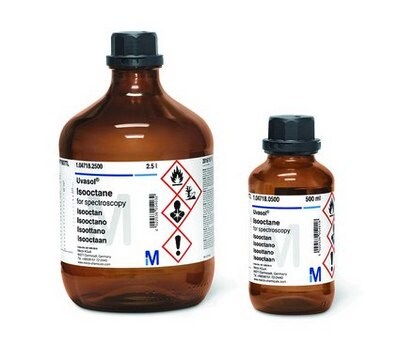推薦產品
蒸汽密度
2.67 (vs air)
品質等級
蒸汽壓力
5.83 psi
產品線
ReagentPlus®
化驗
≥99.9%
形狀
liquid
自燃溫度
212 °F
純化經由
redistillation
expl. lim.
50 %
雜質
≤0.03% (water)
≤1.5 ppm hydrogen sulfide
≤2.5 ppm sulfur dioxide
<100 ppb benzene (No single impurity > 100 ppb, measured as benzene)
<500 ppb total hydrocarbon content
顏色
APHA: ≤10
折射率
n20/D 1.627 (lit.)
bp
46 °C (lit.)
mp
−112-−111 °C (lit.)
溶解度
alcohol: miscible(lit.)
benzene: miscible(lit.)
密度
1.266 g/mL at 25 °C (lit.)
SMILES 字串
S=C=S
InChI
1S/CS2/c2-1-3
InChI 密鑰
QGJOPFRUJISHPQ-UHFFFAOYSA-N
尋找類似的產品? 前往 產品比較指南
一般說明
Carbon disulfide is a toxic, highly volatile, flammable liquid with low ignition temperature. It can be synthesized by reacting hydrocarbon gas with sulfur. It is an important raw material for preparing viscose rayon and cellophane film. It shows fat solvent property. CS2 in water assists the peptide bond formation in amino acids.
應用
Carbon disulfide may be used in the xanthogenation of cellulose and in the synthesis of poly(ethylene trithiocarbonate).
Suitable for industrial hygiene analysis
法律資訊
ReagentPlus is a registered trademark of Merck KGaA, Darmstadt, Germany
訊號詞
Danger
危險分類
Acute Tox. 4 Inhalation - Eye Irrit. 2 - Flam. Liq. 2 - Repr. 2 - Skin Irrit. 2 - STOT RE 1
儲存類別代碼
3 - Flammable liquids
水污染物質分類(WGK)
WGK 2
閃點(°F)
-22.0 °F
閃點(°C)
-30 °C
分析證明 (COA)
輸入產品批次/批號來搜索 分析證明 (COA)。在產品’s標籤上找到批次和批號,寫有 ‘Lot’或‘Batch’.。
Luke J Leman et al.
Astrobiology, 15(9), 709-716 (2015-08-27)
Demonstrating plausible nonenzymatic polymerization mechanisms for prebiotic monomers represents a fundamental goal in prebiotic chemistry. While a great deal is now known about the potentially prebiotic synthesis of amino acids, our understanding of abiogenic polymerization processes to form polypeptides is
Copolymerization of ethylene sulfide and carbon disulfide.
Soga K, et al.
Journal of Polymer Science Part A: Polymer Chemistry, 14(3), 677-684 (1976)
Xanthogenation of lignocarbohydrates by carbon disulfide.
Efanov MV and Pershina LA.
Chemistry of Natural Compounds, 38(1), 90-94 (2002)
Carbon Disulfide.
Smith DE and Timmerman RW.
Kirk-Othmer Encyclopedia of Chemical Technology (2003)
Mark B van Eldijk et al.
Chemical communications (Cambridge, England), 49(71), 7770-7772 (2013-06-19)
CS2 hydrolase, a zinc-dependent enzyme that converts carbon disulfide to carbon dioxide and hydrogen sulfide, exists as a mixture of octameric ring and hexadecameric catenane forms in solution. A combination of size exclusion chromatography, multi-angle laser light scattering, and mass
我們的科學家團隊在所有研究領域都有豐富的經驗,包括生命科學、材料科學、化學合成、色譜、分析等.
聯絡技術服務






